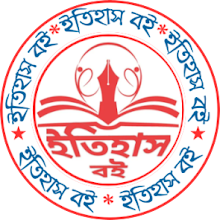MODERN INDIAN HISTORY CONTEMPORARY WORLD AND CIVICS
There will be one paper of two hours duratun carrying 80 marks and an Internal Amessment of 20 marks. The paper will be divided into two parts, Part I and Part II.
Part I (30 marks) will contain short answer questions set from the entire syllabus.
Candidates will be required to answer all questions
Part II (30 marks) will consist of Section A and Section B. Candidates will be required to answer two out of three questions from Section A and three out of five questions front Section B. The sections will correspond to the sections indicated in the syllabus
Part I (30 marks) will contain short answer questions set from the entire syllabus.
Candidates will be required to answer all questions
Part II (30 marks) will consist of Section A and Section B. Candidates will be required to answer two out of three questions from Section A and three out of five questions front Section B. The sections will correspond to the sections indicated in the syllabus
SECTION - A (CIVICS)
1. The Union Parliament ★★2. The Union Executive: The President and the Vice-President ★★
3. The Union Executive: The Prime Minister, the Union Cabinet and the Council of Ministers
4. The Union Judiciary: The Supreme Court ★★
5. The State Judiciary: The High Courts
6. The Subordinate Courts
SECTION B (HISTORY)
1. The First War of Independence (1857)2. Factors Leading to the Growth of Nationalism and Foundation of the Indian National Congress
3. Objectives and Methods of Struggle of the Early Nationalists
4. Second Phase of the Indian National Movement: Partition of Bengal and Other Developments
5. Muslim League and its Objectives
6. National Movement during the First World War: Lucknow Pact and Other Developments
7. National Movement: 1919-1934 (Non-Cooperation Movement, Civil Disobedience Movement and Other Forces at Work)
8. The Cripps Mission and the Quit India Movement
9. Subhas Chandra Bose, Forward Bloc and the Indian National Army (INA)
10. Independence and the Partition of India
4. Second Phase of the Indian National Movement: Partition of Bengal and Other Developments
5. Muslim League and its Objectives
6. National Movement during the First World War: Lucknow Pact and Other Developments
7. National Movement: 1919-1934 (Non-Cooperation Movement, Civil Disobedience Movement and Other Forces at Work)
8. The Cripps Mission and the Quit India Movement
9. Subhas Chandra Bose, Forward Bloc and the Indian National Army (INA)
10. Independence and the Partition of India
THE CONTEMPORARY WORLD
Appendix-1 : The Test Questions (Set I)
The Test Questions (Set II)
Appendix-II: Internal Assessment and Project Work
Appendix-III: The Chronology of Events (Relating to Modern Indian History)
Appendix-IV: The Chronology of Events (Relating to Contemporary World)
Appendix-V: Some Latest Facts and Data (Relating to 'Civics' portion of the book)

Comments
Post a Comment